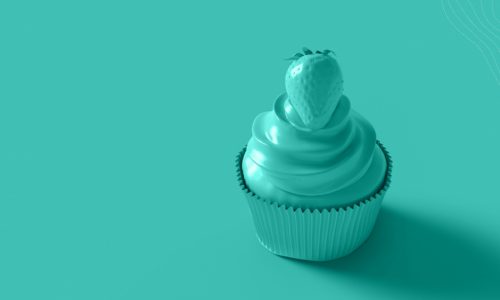BLOG/Strategy & Planning
Uncover your CRO potential | Self Assessment
Ron Pepiel’s famous “set it and forget it” slogan may succeed for some things but not as it relates to your ecommerce store. In e-commerce, you optimize and enhance, or it will cost you big conversion opportunities.
As a marketing manager, you are most often tasked with building and executing campaigns filled with engaging content in support of driving audience acquisition, launching new products, and seasonal sales initiatives. But how often are you spending the time to review and optimize the collections, product details, and cart pages to ensure maximum performance for all those newly acquired site visitors? After all, a lot of work went into those digital marketing campaigns and what will be assessed is how profitable they were. Don’t allow inefficient shopping and buying pages to impact campaign performance.
Reality: Keeping a website optimized for peak performance is a lot of work.
Collections, product details, and checkout pages are the lifeblood of your ecommerce experience. These ‘shopping’ and ‘buying’ pages are an important part of the product discovery to purchase journey, and in this article we’ll explain why this is the case and walk through some simple ways to self-assess how your experience could be improved.
The Journey
Customers begin their journey in a lot of different ways. Whether it is from organic search, a google ad, a social post or word of mouth to name a few, there is one constant among all of these touch points...motivation. Regardless of how they arrive on your website, each and every visitor has a motivation, after all they have chosen to engage for a reason. Our job as marketers is to capture those reasons, prioritize them, and convert them into sales, leads or evangelists. Your homepage and campaign landing pages are vital to this conversion journey, these pages should be used to match incoming motivations, state your value claim, provide supporting value to that claim, and solicit a strong, clear call to action.
So the campaign did its job. It got them to your website. You piqued their curiosity, now what? It’s the next phase of the customer journey that is most critical. Why they should find value in taking another action is precisely why optimizing shopping and buying pages to support your message is so important. Let’s take a look at how this may play out in a scenario.
Jill’s Valentine’s Day Campaign
Jill has created a Valentines day campaign for her website that sells beauty cream. She is sending out ads via Facebook to promote a special free ‘Valentine's Day’ gift bag with purchase of any 3 beauty products. Jill also created a landing page that matches this motivation, showcasing brand content, product benefits and customer validation stories. The primary call to action displayed is ‘Shop Now’, directing visitors to the qualifying beauty cream collection page or qualifying product detail pages.
Unfortunately, the product detail page has many glaring points of friction that are likely to interfere with Jill’s purchasing decision process.
- Long page load time
- Not optimized for mobile devices despite 95% of her audience from Facebook is viewing on a mobile device
- Description is loaded with too much text hiding navigational points and CTAs
- Product Benefits are different than the ads and campaign landing page
- Application instructions and product comparison charts are too small to read on mobile
- Product recommendation element ‘You may also like’ is not relatable to the product that the user is interested in
- No mention of the ‘Valentine’s Day’ gift bag offer on the product page
- Free Gift Bag does not display in the cart automatically when 3 qualifying products have been added
As visitors move throughout the experience, their primary motivation may be lost and much of the audience Jill worked so hard to acquire may exit at the product page level without making a purchase due to the friction and confusion the page seems to illustrate. Highly motivated visitors get frustrated and confused because the cart does not reflect their free gift bag, and subsequently abandon. users are likely to become disinterested if motivation is not consistently matched throughout the experience or if the mobile experience is not intuitive to quickly add products to cart.
Self-Assess Your Digital Experience
So how can you identify what needs to be improved? Streamline this process first by using this simple assessment to determine where some basic optimizations could be directed.
The three primary areas to asses are:
- Motivation - Visitor’s driving interest in your products or services.
- Value - Articulation of why to choose your product/service as opposed to a competitor’s or substitute product.
- Friction - Aspects that elicit difficulty or confusion.
Prioritise your assessment based on the platform your audience is viewing. In Jill’s case, she would prioritize mobile first. You do not need to be a data wiz to follow these simple recommendations, however using available data and analytics to confirm visitor behavior and prioritization will enhance your ability to further validate your assessment.
STEP 1
Review each page by the questions below and note any areas where you are not able to answer 100% YES! It is recommended that you elicit the help of some team members to review the questions and provide differing points of view. Once you are able to discuss the answers to these questions, make a list of all the items you and your team noted as anything other than “Yes”.
- Motivational Segmentation
- Are primary motivations like campaign language, gender, style, or use case to name a few, given clear shopping pathways?
- Are directional cues like headers or icons and calls to actions (CTAs) consistently used to guide and set user expectations along the way?
- Does the overall tone and feel of the site match with the primary audience?
- Value Articulation
- Does the experience clearly make an overall claim of value?
- Are brand/product uses/benefits clear and well articulated so users can understand the value offered?
- Are separate products clearly differentiated by value where consideration exists?
- Friction
- Are any areas causing visitors to struggle between too many competing options?
- Are there areas that include long blocks of text?
- Do any pages take more than 3 seconds to load?
- Does content/campaign information exist that may confuse users?
- Is there any content/campaign information missing that may lead to confusion?
- Does functionality exist that may be difficult for some users?
- Is the mobile experience easily skimmable for consideration and purchase?
STEP 2
Now that you have a list, brainstorm possible optimization solutions to each one of the items. If possible, we recommend holding a working session with your team for a larger range of ideas.
STEP 3
Prioritise your list of optimizations based on estimated impact and level of effort. Recommend using data and analytics to support prioritization.
STEP 4
Implement changes to your web pages based on the prioritized list of enhancements and/or optimizations. (It is highly recommended to translate your solutions into hypotheses for testing and validation)
Lastly, here is a simple example of how you can optimize for a common friction point of an ecommerce website product detail page..
Problem: Long blocks or paragraphs of text
Solution: Minimize product page description area copy through bullet points and tooltips to decrease friction surrounding reading the information, improving skimmability and subsequently increase the rate of adds to cart on mobile.
...
To see what results look like when you invest in CRO and start reducing friction for your ecommerce website visitors, view our CRO Case Study for a Beauty brand.
More from the
DO Blog

Designing & Building Product Finder Quizzes for eCommer...
Strategy & Planning / December 23, 2020
View Blog Post
3 Customer Motivation Strategies to Improve Your eCommerce i...
Strategy & Planning / July 27, 2020
View Blog Post
